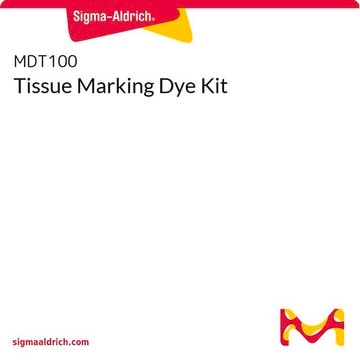442658-U
Methylene di-p-phenyl diisocyante
analytical standard
About This Item
Produtos recomendados
grau
analytical standard
embalagem
ampule of 1000 mg
técnica(s)
HPLC: suitable
gas chromatography (GC): suitable
aplicação(ões)
environmental
Formato
neat
temperatura de armazenamento
2-8°C
InChI
1S/C15H10N2O2/c18-10-16-14-5-1-12(2-6-14)9-13-3-7-15(8-4-13)17-11-19/h1-8H,9H2
chave InChI
UPMLOUAZCHDJJD-UHFFFAOYSA-N
Aplicação
Palavra indicadora
Danger
Frases de perigo
Declarações de precaução
Classificações de perigo
Acute Tox. 4 Inhalation - Carc. 2 - Eye Irrit. 2 - Resp. Sens. 1 - Skin Irrit. 2 - Skin Sens. 1 - STOT RE 2 Inhalation - STOT SE 3
Órgãos-alvo
Respiratory system
Código de classe de armazenamento
11 - Combustible Solids
Classe de risco de água (WGK)
WGK 1
Ponto de fulgor (°F)
411.8 °F - closed cup
Ponto de fulgor (°C)
211 °C - closed cup
Equipamento de proteção individual
dust mask type N95 (US), Eyeshields, Faceshields, Gloves
Escolha uma das versões mais recentes:
Já possui este produto?
Encontre a documentação dos produtos que você adquiriu recentemente na biblioteca de documentos.
Nossa equipe de cientistas tem experiência em todas as áreas de pesquisa, incluindo Life Sciences, ciência de materiais, síntese química, cromatografia, química analítica e muitas outras.
Entre em contato com a assistência técnica








